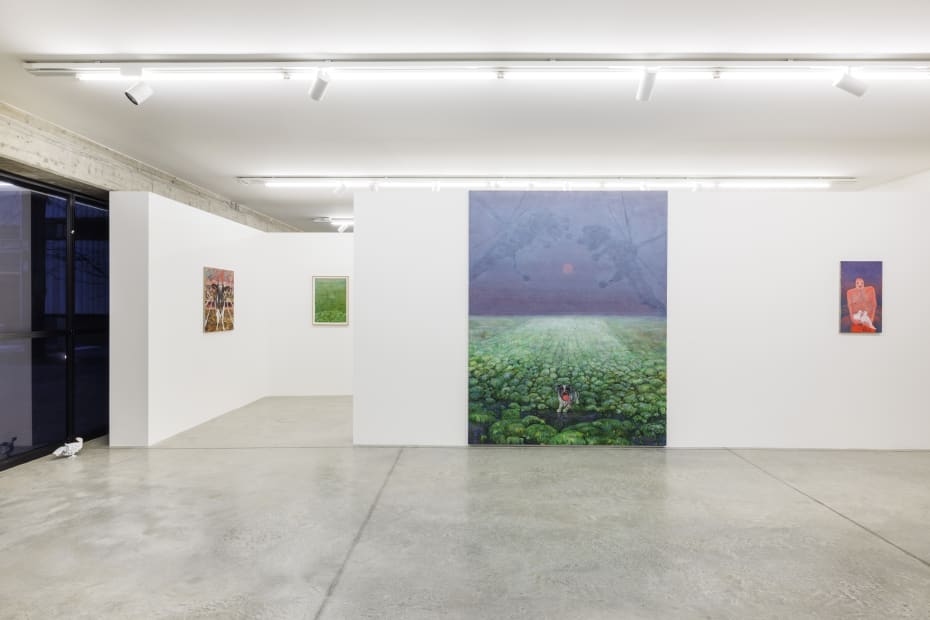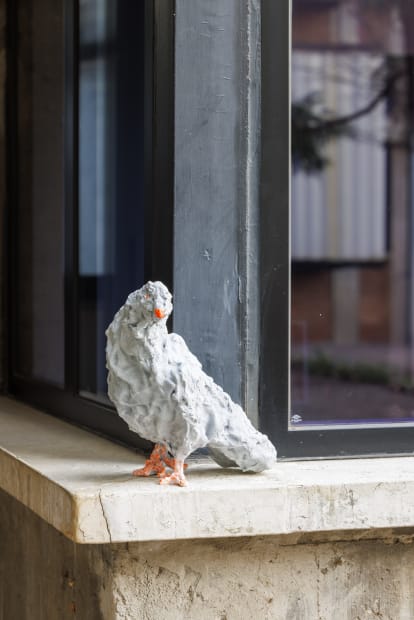The Pattern Room at Collezione Maramotti will be housing Andriu Deplazes’s project Burning Green, the first solo exhibition in Italy by this young Swiss artist based in Marseille.
In this group of more than thirty works, most of them made specifically for the show, Deplazes extends his formal and conceptual approach to painting, working on a larger scale and with new methods of production and presentation.
The dramatic imagery evoked by the title, explored in an original style that draws on various manners and moods of late nineteenth- and early twentieth-century Western painting – Art Deco, Ernst Ludwig Kirchner, Ferdinand Hodler, Pierre Bonnard, Käthe Kollwitz, Francis Bacon, Nancy Spero – is linked to the characteristic concerns and techniques of Deplazes’s work.
The green in question could be an allusion to the landscape, to the environmental crisis and to the aggressive exploitation of resources, but also to the military themes that turn up in some of the new works, or the traces of fluorescent colour often used by this artist.
Within a layout of the space conceived especially for this exhibition, Deplazes fills the gallery with sculptures and the walls and windows with paintings on canvas and works on paper or plexiglass, taking viewers on a journey through private worlds that reveal the artworks in successive stages.
Deplazes’s work contains echoes of personal experience and fragments of current events, intertwined along two main paths of investigation: the role of human beings in the social sphere, and in relation to nature, from a philosophical and anthropological standpoint.
Spurred by his interest in questions of identity and in the power dynamics at work within societies and family structures, the artist places his alienated human/humanoid figures – who are often isolated and diaphanous, with vague features – in unsettling domestic interiors or contexts dominated by nature. Naked, deformed and seemingly vulnerable, the androgynous subjects presented to our gaze are the hub of a reflection on how we perceive self and body, challenging the norms and excesses of voyeurism and narcissism.
Tinged with melancholy and walking a tightrope between narrative presence and physical evanescence, his characters embody archetypes of humanity and pose ironically insistent questions about identity, social dynamics, and the state of our species today, in relation to an environment, flora and fauna that may be wild or, more often, has already been anthropized.
The environmental crisis, the consumption of the landscape by agriculture – but also its diminishment through stereotyped narratives – the Romantic conception of the relationship between humans and nature, the notion of wilderness, humanity in nature, the nature of humanity and the nature of Nature: all of this feeds into works that are pointed in their critique and yet dreamlike, before which we feel unease, but also empathy and familiarity with something we recognize as intrinsically human.
The book that will be published in conjunction with the exhibition includes a conversation between the artist and Julian Denzler, curator at Museum zu Allerheiligen in Schaffhausen, and essays by Anna Deplazes, senior researcher and project leader for the University Research Priority Programme Global Change and Biodiversity (URPP GCB) at the University of Zurich (UZH), and by art critic and independent curator Davide Ferri.











